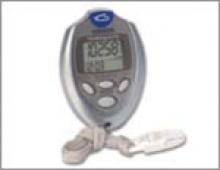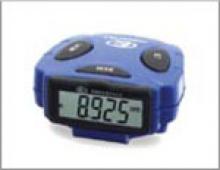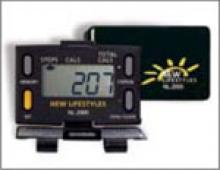Step goal and step diary
Only studies that included a step goal and required participants to keep a step diary showed a significant increase in physical activity with pedometer use. There were no differences in outcomes based on duration of the intervention, inclusion of physical activity counseling, or the brand of pedometer used.
BMI and BP improved; lipids, glucose did not
Intervention participants had a statistically significant decrease in BMI of 0.38, which was associated with older age (P=.001), having a step goal (P=.04), and longer duration of the intervention (P=.07, trend). Intervention participants also had a significant decrease in systolic blood pressure of 3.8 mm Hg and diastolic blood pressure of 0.3 mm Hg (TABLE 1), which was associated with greater systolic blood pressure at baseline (P=.009).
There were no significant differences in serum lipids or fasting serum glucose in the studies that reported these variables.1
TABLE 1
Pre- and post-intervention body mass index and blood pressure
| body-mass index | 18 (562) | 30 (3.4) | –0.38 (–0.05 to –0.72) | .03 |
| systolic blood pressure | 12 (468) | 129 (7.5) | –3.8 (–1.7 to –5.9) | <.001 |
| diastolic blood pressure | 12 (468) | 79 (4.5) | –0.3 (0.02 to–0.46) | .001 |
WHAT’S NEW?: Weight loss without dieting
This study is the first large meta-analysis to show that pedometer use is an effective intervention for promoting physical activity. Another recent meta-analysis shows that pedometer use is also effective for short-term weight loss, even in the absence of dietary changes.14
Pedometers and goal-setting are simple, relatively inexpensive ways to help patients become physically active. According to systematic reviews,15,16 telephone-based programs, encouraging stair use, and creating exercise space are other effective interventions to promote physical activity. Some of these interventions are at least as effective as pedometers; however, only encouraging stair walking and pedometer use are practical office-based interventions.
CAVEATS: Price and quality
A 2004 Consumer Reports article ranked pedometers by accuracy, ease of use, and features.17 Accurate step counts allow patients and physicians to assess whether step goals are being met. Pedometers are more accurate when recording fast walking (2.5–3.0 mph), compared with slow walking. Pedometers may therefore be less accurate in the elderly, very obese, or those who walk slowly.18
TABLE 2
Consumer Reports top-rated pedometers17
| Omron healthcare HJ-112 | $28.45* |
| Freestyle Tracer | $15.99* |
| New lifestyles NL-2000 | $59.95† |
| * Price from www.pedometersusa.com, accessed December 12, 2007. | |
| † Price from newlifestyles.com, accessed December 12, 2007. | |
| Omron, Freestyle, Yamax, Walk4Life, and New Lifestyles have been shown to be reliable brands.19,20 | |
Negotiate the goal, patient keeps diary
Remember that patients must be counseled to set a step goal and keep a step diary. Most patients will have an initial step goal between 6000 and 10,000 steps per day. The step goal should be individualized to each patient’s current level of activity and gradually increased as activity level increases.
Schedule monthly or semi-monthly follow-up visits to evaluate progress towards activity or weight loss goals and to re-evaluate the step goal. Before beginning an exercise regimen, including walking, patients must be healthy enough for physical activity. In some cases, patients will need stress testing or other evaluation before using a pedometer to increase activity.
CHALLENGES TO IMPLEMENTATION: Time-wise
Counseling patients on the use of pedometers, and coaching them to set an appropriate step goal and keep a step diary, will take up time during the office visit, but it should be a brief intervention and therefore feasible.21
Omron Healthcare HJ-112
FreeStyle Tracer
New Lifestyles NL-2000
Organizing your office staff to assist you, and using a patient handout containing the basic information on pedometers, could reduce the demands on your time. Including information from the 2004 Consumer Reports article and Web sites with pedometers prices (such as www.pedometersusa.com and newlifestyles.com) should provide a good start for those patients who want more information.
PURLs methodology
This study was selected and evaluated using FPIN’s Priority Updates from the Research Literature (PURL) Surveillance System methodology. The criteria and findings leading to the selection of this study as a PURL can be accessed at www.jfponline.com/purls.




